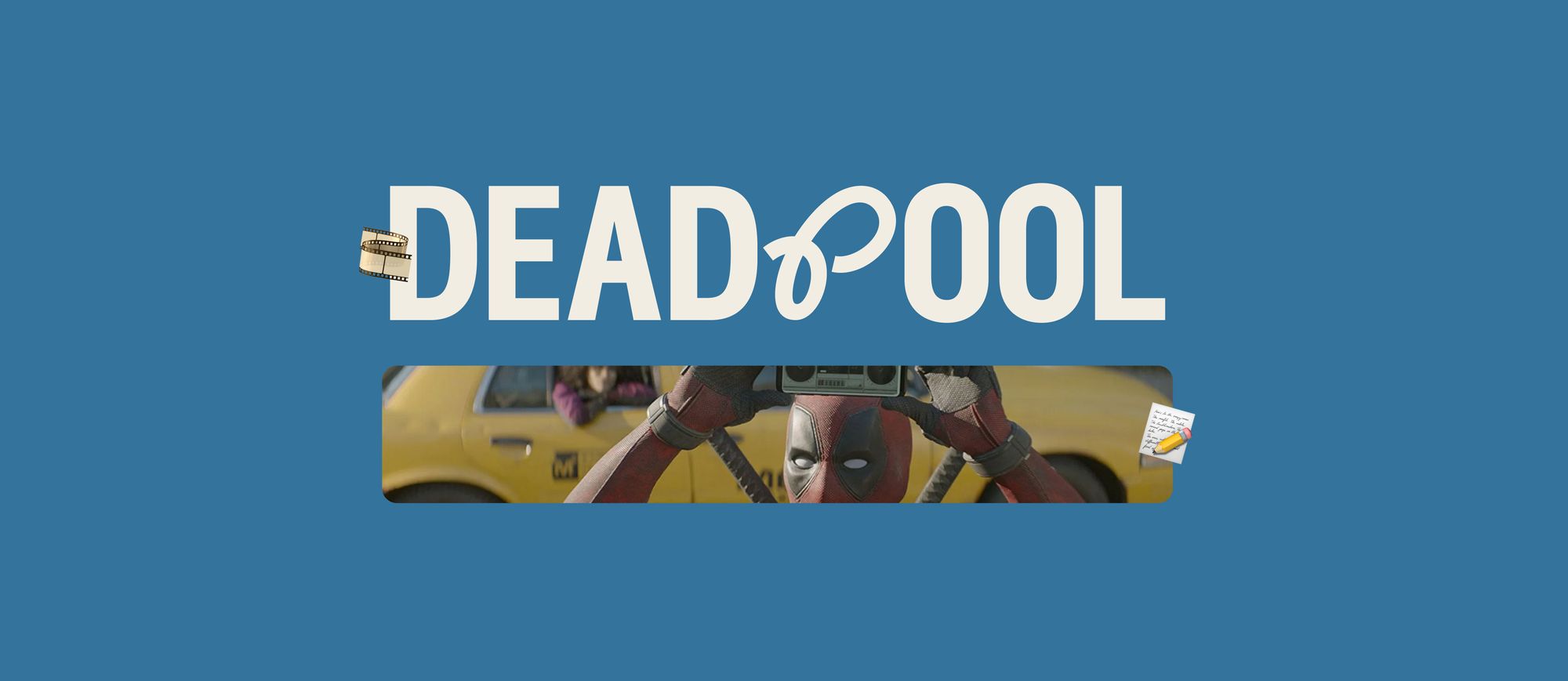The low-hanging fruit of self-promotion? “Look how crappy my competitors are, I’m not like them – I’m so much better.”
Sure, polarisation works – and we do whatever feels right AND pays off in business. But let me bring this perspective: What else do we stand for? How might we differentiate and stand out beyond comparisons?
(Because the strongest asset you have is your perspective – if everyone just went for skills, Trump wouldn’t have been elected as the US president.)
My friend Christine (her newsletter is my inbox's "must have") suggested today’s character, Deadpool – and I thought it was the time to talk about how to poke fun at the status quo AND stick to your voice in everything you do.
And the story goes:
Shiny floors and a glaring lack of mutants – welcome to the iconic X-Men mansion. In Deadpool’s sight there are just two mutants.
“Bit empty, isn’t it?” he muses, then quips, “It’s funny that I only ever see two of you. Almost like the studio couldn’t afford another X-Man.”
Deadpool never misses a chance to poke fun at others, let alone at his own film’s budget! Yet, beneath the mask, there's more than just a twisted sense of humour and a love for chimichangas.
Character narrative at glance
🎞️ Story arc: From a special forces operative battling cancer, Wade Wilson – to a disfigured mercenary with healing abilities who finds space for self-acceptance, Deadpool.
💭 Thinking behind: Created as a parody of overly serious superheroes and a copy of another hero (“Slade Wilson”) in comics, Deadpool starts out as a villain and transforms into an anti-hero. With the changes in the writers team, Deadpool eventually adopts the snarky tone of voice that makes him stand out and gain a cult following who would excuse absolutely anything the character does. Thanks to his smaller but absolutely-in-love audience, the character was saved countless times – from continuing his story in the Marvel comics to reviving his persona for a film adaptation, “Deadpool” (2016).
🗺️ Narrative: Both in his fictional world AND within the writing narrative (simply put: our real world), Deadpool is a symbol of subversion – of reality and audience’s expectations – who challenges the status quo.
🍋 Character deep dive: Some interesting context for you on Deadpool vs superheroes.
🗺️ Mapping Out The Narrative
“Must be exhausting always rooting for the anti-hero,” – thanks, Taylor Swift, with Deadpool it’s indeed a full-time job.
And root we do – it’s an innate curiosity to notice someone who stands out, to pause and listen a bit more carefully for what they have to say. Why do they even go against the current?
Unlike polished superheroes, Deadpool makes his mark both visually and contextually:
- His costume design is intriguing – have you noticed how red & black are not typical goody-good hero colours?
- His appearance is disfigured AND he feels self-conscious about it – and we get to see his struggles with self-love and mental health. (That’s rare for superheroes.)
- His nature is to follow personal motivation and whatever suits him in the moment – not the universal sense of justice so common among heroes.
“Alright, we get it, he’s so special.” Well, yes and no, Deadpool is – (pls don’t roll your eyes) – authentic. That’s not special.
What’s special is that Deadpool as a character challenges the status quo of the world he exists in (the fictitious world of pompous heroes) AND within (our world with writers who make up his stories). He has a point of view.
Low budget jokes? Oh please. Deadpool often ridicules the very structure and predictability of the stories, subverts the audience’s expectations, and lets us in on a joke.
Like in this comic: Deadpool goes on the killing spree of iconic Marvel Universe heroes and villains – until he realises that it was the writers who controlled him. His reaction? Break the fourth wall and threaten his creators. Classic.
(I wrote about fourth-wall breaks before as a tool to connect with your audience – yes, it’s my personal cross-promotion.)
Snarky commentary. Poking fun. Deeply self-aware fourth-wall breaks. Joking that he’s just a fiction character. Deadpool’s point of view trickles down into his tone of voice and actions – and that builds you a die-hard-fan audience.
🍋 Navigating To Your Brand
You can make “being different” a whole personality and poke at the status quo all you want – or you can borrow the emotions it stirs to build into your point of view.
Why? To resonate with the right people.
How? Take this prompt:
- What do you HATE in your industry? (Think of a classic Chrissy Teigen facial expression – this is how you feel when you see such content.)
- Why does it cause such a reaction in you? (Maybe you have personal experience with it – or helped a client who had fallen for it.)
- Reverse it and make YOUR dent: What are you in favour of? What are you fighting for? (Lead with your point of view, not just “I hate when X does Y” – differentiate based on your perspectives and merits.)
- Put it in action 🫡 Take one concept you disagree with + reverse it + talk about what you believe in (opposite to criticising only), in your authentic voice (people respond to emotions) = rinse and repeat!
More than dry knowledge you possess or a service you sell, lead with your greatest asset – your perspective!
Because like Deadpool says, when your crazy meets your audience’s crazy, it’s a match made in heaven 😉
